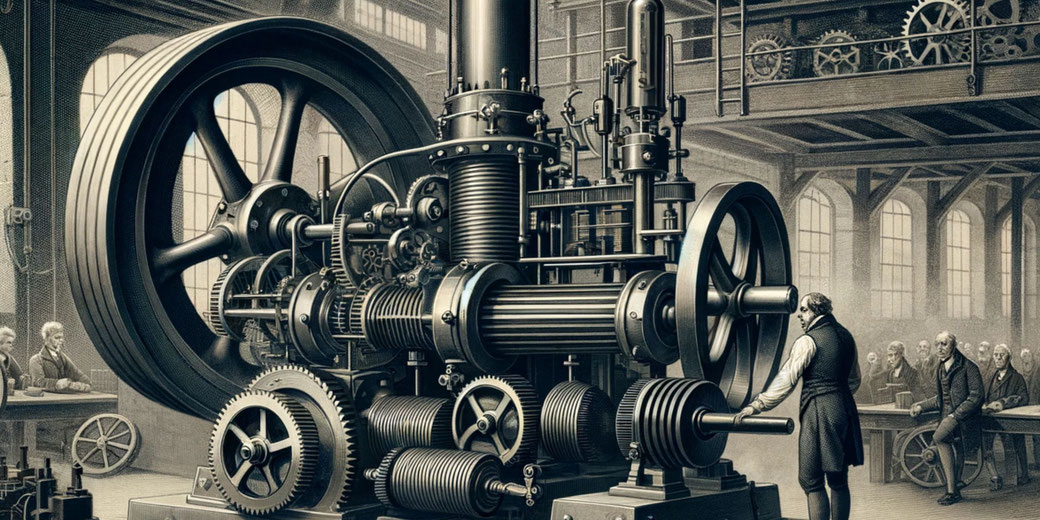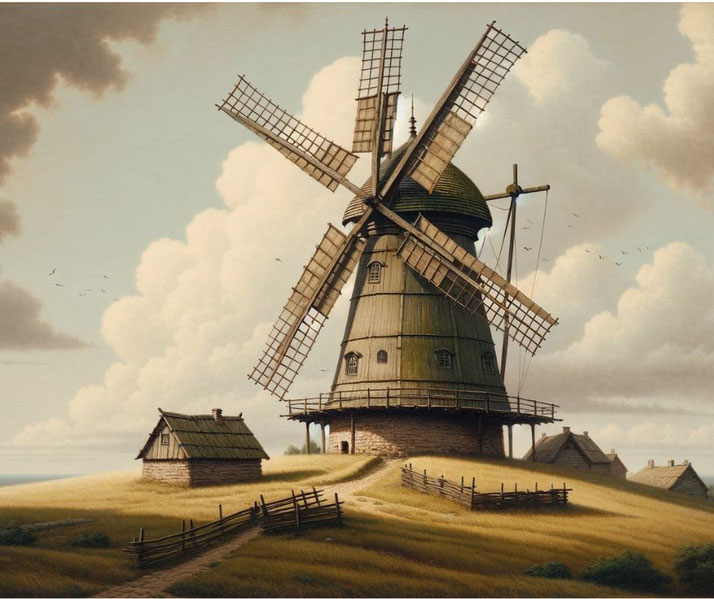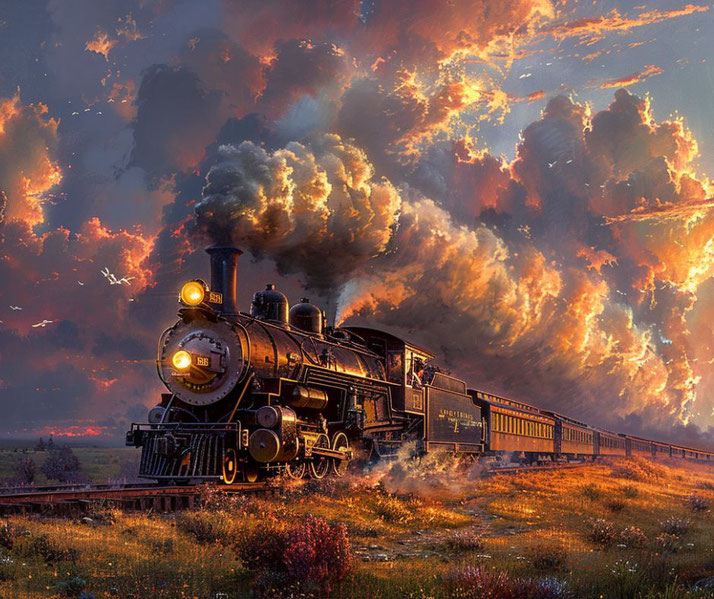The incredible rise of steam power in the Industrial Revolution

One of the most important developments that made the Industrial Revolution was the creation of mechanical sources of power.
Once machines were made that could provide consistent and reliable power supplies, factories were able to produce goods and resources in a more efficient manner.
What did people use before steam power?
For millennia in British history, any mechanical processes required natural sources of energy to work. This included harnessing the power of wind, water or animals.
However, each of these power sources were unreliable: wind constantly changed speed or disappeared without warning; water could also rise or fall depending upon rainfall throughout the four seasons of the year; and animals needed to sleep, be fed, and could fall ill.
Then, in the early stages of the Industrial Revolution, inventors tried to use these traditional power sources for their creations, with limited success.
The most obvious example was agricultural machines, which were pulled along by horses or oxen.
These animals were then used for pulling mine carts and boats along canals. Even the most common transport, the horse and cart, was not replaced until the 20th century.
New machines that incorporated horses in their processes included threshing machines, which separated wheat grain from the plant husks of the wheat plant, created in 1784 by Andrew Meikle.

Likewise, water-powered machines had been used since ancient Roman times.
Usually, a water wheel with blades would be built next to a water source, such as a river, which would spin a central axle that could be attached to machines.
This was a common power source for flour mills throughout Europe. In the initial stages of the Industrial Revolution, sawmills also used water wheels to power large circular saws, and textile factories attached new machines to produce cloth.
Finally, wind power had been used in Europe for centuries. Wind gusts were caught in sails or large blades, which spun a central axle that could also be attached to machines.
In many countries, this was the most common form of natural power employed by flour mills.
Other countries, like the Netherlands, used wind power to run water pumps to keep their agricultural land from becoming waterlogged.

Creation of steam power
The most significant invention of the Industrial Revolution was the discovery of how to harness the power of hot steam to run engines.
The first person to create, what he called an ‘atmospheric engine’, was Thomas Newcomen in 1712.
His machine used burning coal to boil water to create steam. The steam would fill a chamber that would push up a piston, before the steam was released and the piston would fall down again.
The process would then repeat over and over again. The rising and falling piston could be attached to a large horizontal beam that could be attached to any machine.
In its early days, the Newcomen atmospheric engine was used to pump water out of coalmines to avoid flooding.
Newcomen's creation changed how people approached power during the Industrial Revolution.
By using them in coalmines, miners could begin digging far deeper than ever before, and could access larger sources of coal.
The increased supply of coal meant that it was much cheaper for people to buy and was an effective source of fuel for more factories.
This, in turn, accelerated the Industrial Revolution's progress.
James Watt's revolutionary steam engine
However, the most important new steam engine was created by Scottish engineer, James Watt.
Watt was impressed by Newcomen's 'atmospheric engine' but realised that it was very inefficient.
Most of the steam it produced was lost and it burnt too much coal for the power it produced.
Watt then created a much-improved version, simply called the 'steam engine' in 1769.
Using new chambers and seals, Watt's engine conserved most of the steam produced, and needed less coal to produce the same amount of power than Newcomen's version.
Also, instead of attaching his machine to a large beam, Watt used a large 'flywheel'.
This meant that the piston pushed in a constant circular motion, rather than falling up and down.
Keeping a circular rotation meant that natural momentum was kept up by the wheel, again, making it more efficient.
James Watt approached a manufacturer called Matthew Boulton to make this machine and it quickly became the best-selling, and most reliable, steam engine ever made.
With the creation of effective and efficient steam engines, other inventors found ways of attaching them to movable objects.
Richard Trevithick built the first full-size steam road locomotive in 1801, which paved the way for steam trains.
The first steamships followed soon after, with the first one capable of crossing the Atlantic being built by Isambard Kingdom Brunel in 1838.

Further reading
What do you need help with?
Download ready-to-use digital learning resources
Copyright © History Skills 2014-2024.
Contact via email
With the exception of links to external sites, some historical sources and extracts from specific publications, all content on this website is copyrighted by History Skills. This content may not be copied, republished or redistributed without written permission from the website creator. Please use the Contact page to obtain relevant permission.





